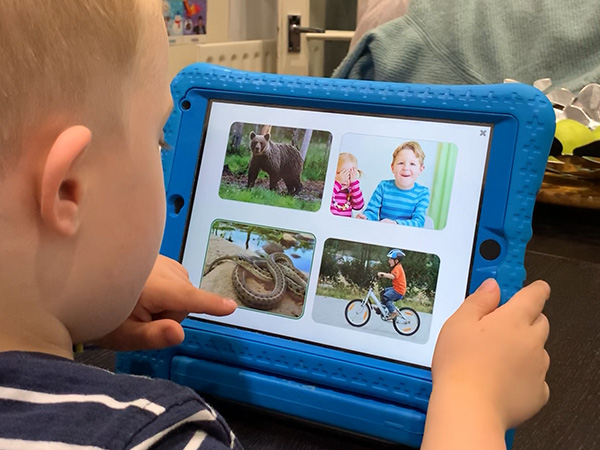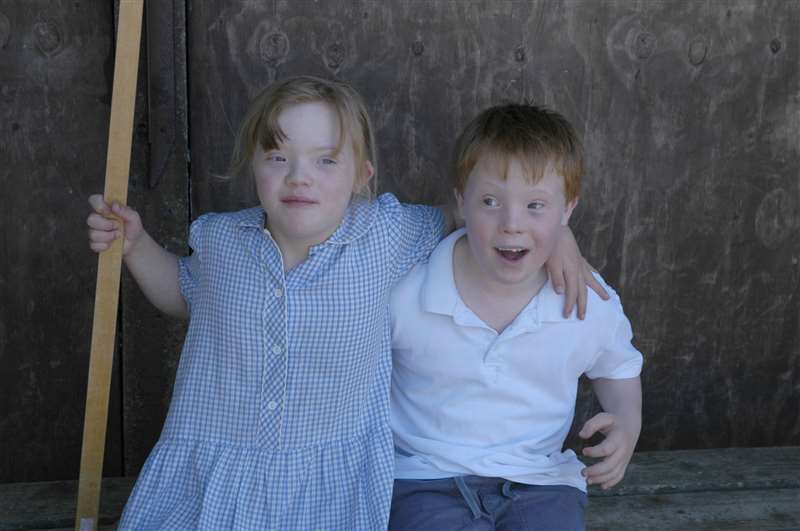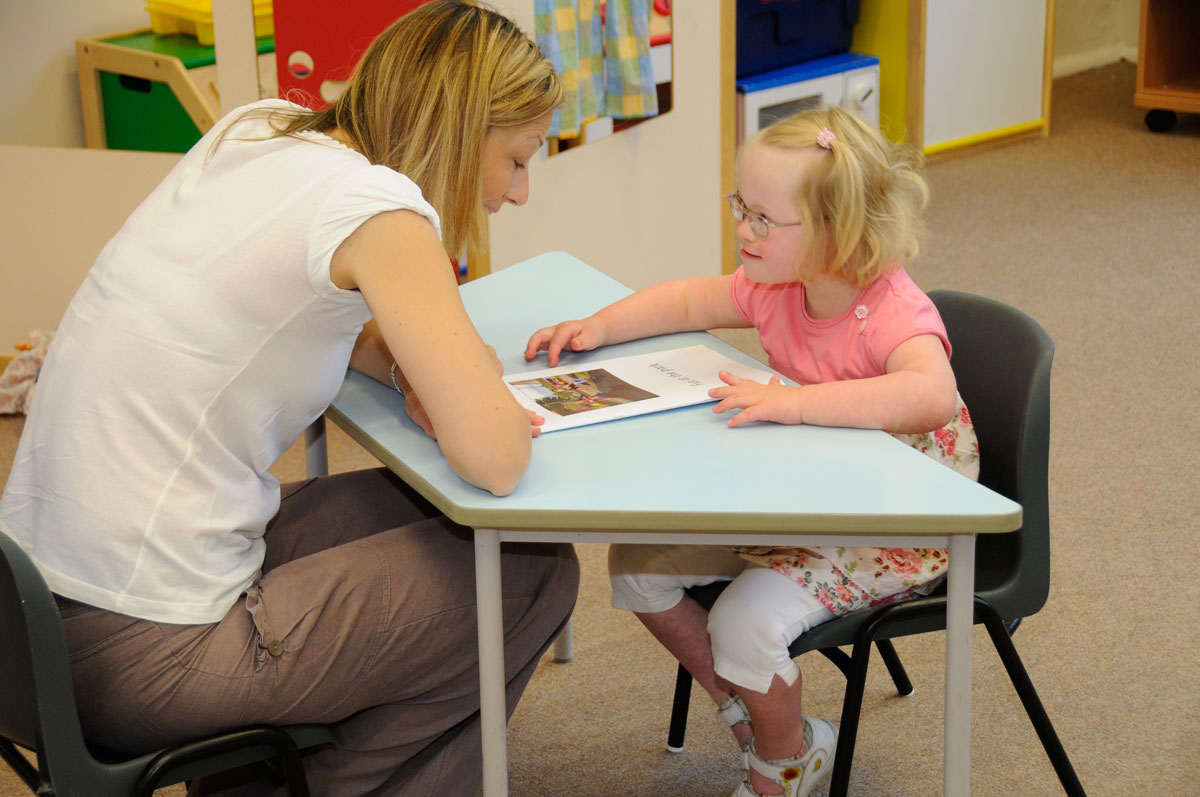About See and Learn
See and Learn offers evidence-based activities and guidance to support early development for children with Down syndrome and for children with similar learning needs.
See and Learn is developed by Down Syndrome Education International and Down Syndrome Education USA and is informed by the latest research and extensive practical experience. DSE has been at the forefront of educational research for children with Down syndrome for over 40 years.

The challenges
Children with Down syndrome experience a common pattern of developmental difficulties and learn more slowly than many other children.
- Speech skills develop more slowly from the first months of life - taking an average of 25 months to learn to produce four consonant sounds, compared to around 8 months for typically developing children in a play setting
- New words are learned more slowly - with smaller spoken vocabularies of around 250 words when starting primary school, compared to over 6,000 words for typically developing children
- Words are combined more slowly - with children with Down syndrome, on average, starting to put two words together at around 35 months of age, compared to around 18 months for typically developing children
- Grammar skills develop more slowly - most typically developing children have begun to put words together in sentences by around 36 months, while many children with Down syndrome do not reach this stage until around 67 months of age
Why this matters
Speech and language delays have a profound impact on many aspects of cognitive and social development, wellbeing, and quality of life.
- Speech skills develop from the first weeks of life and underpin word learning and verbal short term memory
- Vocabulary underpins our knowledge of the world and what we can say about it
- Words, phrases, and sentences are the building blocks for thinking, reasoning, and remembering
- Reading offers access to a world of imagination and new knowledge, and increases participation in modern life
Language enables us to share our experiences, emotions and needs, to make friends and to fully participate in family, school, work and community life.

How we can help
Although developmental progress is clearly influenced by genetic differences, outcomes for children with Down syndrome are not fixed. Evidence suggests that regular additional support, carefully targeted to meet the children’s developmental needs improves outcomes.
Over the past 40 years, scientific research has helped us better understand the children's needs and how to better support them, suggesting that:
- Levels of achievement can be raised across many areas of development - including early speech skills, word learning and grammar
- Speech and language skills should be explicitly taught - language is learned and depends on input - including opportunities to listen to sounds and words, encouragement to imitate and practice, and responses to attempts to communicate
- Additional support should start at home from an early age - everyday interactions, learning opportunities and experiences play critical roles in all children's development from birth and throughout the early years
- Therapy and teaching should be adapted to meet specific needs - activities should be adapted to build on the children's learning strengths and to reduce the effects of their specific difficulties
- Teaching activities should be selected to match individual skills and progress - each child should be supported through developmentally appropriate steps, reflecting their current skills and matched to their own rates of progress
- Additional support should be regular and frequent - children with Down syndrome need additional opportunities to learn and additional practice to consolidate new knowledge and skills, and can benefit from regular, short teaching sessions and from learning opportunities woven into ordinary everyday activities
Given appropriate support, almost all children with Down syndrome will make steady progress throughout childhood, through teenage and into their adult years, acquiring the skills they need to lead more independent, productive and fulfilling lives.
How See and Learn helps
Meeting specific needs
See and Learn teaching activities include specific adaptations to support learning for children with Down syndrome and children with similar learning needs, taking account of auditory processing difficulties, verbal short term memory deficits, hearing loss, and relative difficulties with expressive language compared to receptive language skills.


Small steps - steady progress
See and Learn teaching activities are structured to follow typical developmental pathways but divided into small steps to steadily build new skills on secure foundations.
We encourage repeated practice and rehearsal in short, regular teaching sessions, rewarding success and avoiding failure.
Progress is tracked and teaching targets planned by keeping records of practice sessions and achievements.
Evidence-based. Tried and tested.
The design of the See and Learn programmes is informed by over 40 years of research and practical experience supporting families and educators.
The See and Learn programmes follow principles successfully practised by many thousands of children and families for over 25 years in countries around the world.


At home, in groups and in school
Our programmes are designed to be used regularly at home, in early intervention groups, and in school from an early age.
The first few years of life are a critical period for the development of key skills that provide the foundations for later learning. High quality support throughout early childhood that focuses on the children’s specific needs can transform later learning, development, and life outcomes.
Ready to get started?
Step through our guidance on how and when to get started with See and Learn.

